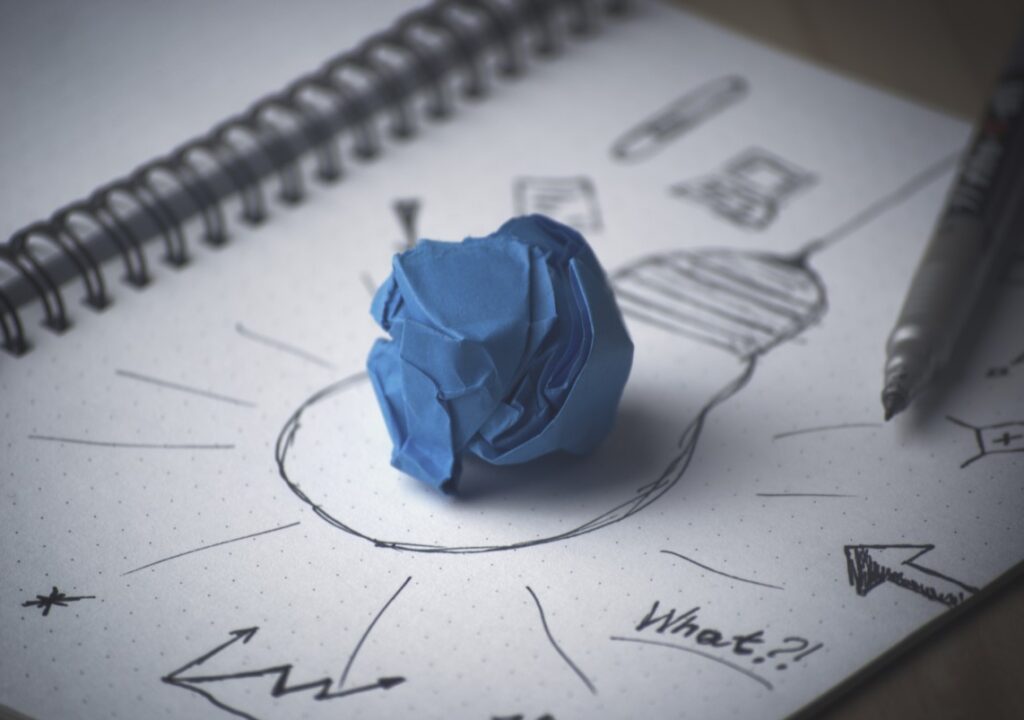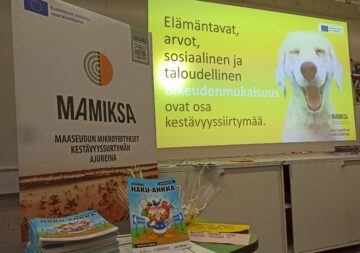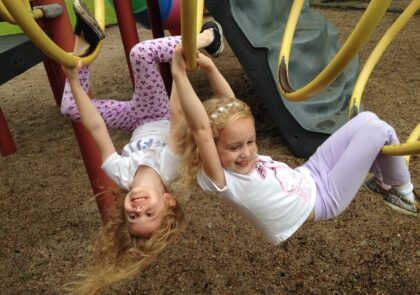
Creative work can sometimes feel like an emotional roller coaster. Enthusiasm, flow, feelings of being stuck, fear, immersion, peace and relief are examples of the feelings and experiences that you might go through along the way. Sharing the process with others and the opportunity to verbalize the experiences can help to identify, understand and accept the emotions brought up by creative work. This article reflects on what kind of stages creative processes can include, what kind of emotions different stages might arouse and what might best work for you in the different stages.
Author: Emmi Ollila
What is creativity and how to describe it?
What comes to your mind when you think about the word ‘creativity’? Aha moments, perhaps or the wonderful feeling of enthusiasm when an idea pops up and you start to visualize it? Or maybe the feelings of being in the middle of a long writing process and pondering that somehow, it should all feel easier because creativity is supposed to be light and fun, right? Or the relief of having a final product at the end of the process and being able to move on to the next wild idea? It is a reassuring thought that creative work can involve all these steps and the feelings that come along with them, and so much more. It can be a roller coaster, indeed.
According to Koski and Tuominen (2023), creativity is – plain and simple – thinking new thoughts and doing things in a new way. This involves combining old information so that the result is new. Creativity is stopping to think deeply. It is work that does not necessarily look like work. Most of all, creativity involves effort: gathering information, learning new things, developing a view of what is worth paying attention to, combining information in a new way and creating and developing something new so that it becomes meaningful and practical. Creative thinking requires being able to focus on a matter again and again from different angles. This also requires passion and enthusiasm in the subject. (Koski & Tuominen 2023.)
There are several models and methods to describe the creative process, including
- Design thinking, which includes the following stages: empathize, define, ideate, prototype, and test. The method is often represented as the “Double Diamond” model. Design thinking is applied especially in product design, user experience (UX) design and service design and its purpose is to create and develop products or services which are based on user needs. (Waas 2023.)
- Creative Problem Solving (CPS) method involves the following steps: clarify, ideate, develop and implement (Creative Education Foundation 2024).
- SCAMPER method encourages to look at the service or product design through 7 different lenses: substitute, combine, adapt, modify, put to another use, eliminate and rearrange. (Dam & Siang 2024).
- Six Thinking Hats method encourages to look at a challenge or case from different perspectives by switching hats: facts, optimism, risks, feelings, creativity and the process (de Bono 1985).
The Creative Process
Almost a hundred years ago, Graham Wallas presented a model of the creative process in his work The Art of Thought (1926). The model is still widely applied to describe the different steps of creative work. The stages presented in the model are preparation, incubation, illumination and verification. Let’s have a closer look at the different stages.
1. Preparation
In the preparation phase we investigate the problem from many angles. We gather information extensively. Examples of this phase include literature research, webinars, podcasts, conversations at work and outside of work. Thinking is divergent in nature, i.e. increasing perspectives. While combining information, we notice what we want to learn more about and look for additional information. Learning new things is in the heart of the preparation phase and this is something we can do continually. After the preparation phase comes the incubation phase when we set the conscious work aside, do something relaxing or sleep on it. (Tirkkonen 2019 & 2024, Wallas 1926)
2. Incubation
In the incubation phase, it is good to forget about the task that requires creativity and do something completely different. A walk in nature, other tasks, meditation, hobbies, living in the moment, sleeping on it a night or two and a relaxed mood help attract a new insight. (Tirkkonen 2019 & 2024, Wallas 2024.)
3. Illumination
In the illumination phase, the idea or the flash of genius often comes to mind unexpectedly and when least expected. However, as Mattson (2024) and Koski & Tuominen (2023) point out, the aha moments happen thanks to the effort that has been made in the preparation phase.
4. Verification
In the verification phase, “both the validity of the idea [is] tested, and the idea itself [is] reduced to exact form” (Wallas 1926 & Mattson 2024). This is the phase where we test the new idea and put it into practice. The testing and reflection stage is sometimes also called the evaluation phase (Skillsyouneed 2024). In the verification phase, we take a closer look on the information we have gathered and do the actual creation work by e.g. writing, structuring and modifying an article. The nature of thinking is convergent, i.e. weeding out alternatives. We evaluate possibilities and work on different ideas. (Koski & Tuominen 2023.)
Every process is different
Interaction and collaboration often play a key role in the creative process (Tirkkonen 2024, Koski & Tuominen 2023 and Skillsyouneed 2024). A small group is often better for creativity than a large one (Koski & Tuominen 2023). One of the greatest joys of work can be when you have the possibility to work on a creative project or task, guide the process and can share the thoughts and feelings along the way with colleagues who share those experiences.
During the creative process, we also move back and forth and jump from one phase to another. During the verification phase, for example, we might notice that we need additional information and new perspectives on a certain topic. So, we switch back to the preparation phase. Sometimes taking a walk outside while listening to a podcast, webinar or audio version of a book works best. Movement helps to understand the topic deeper, get new ideas and grasp how the different pieces of the puzzle fit together. When we have gathered more information, we might take a break or sleep on it. Then, we might get a new idea on how the new information might fit into the puzzle and go back to writing. If we feel stuck, we might take another walk and chat with a colleague. Trying to explain the matter while moving might do the trick.
Feelings and experiences along the way and what works for you
The creative process comes with a wide range of feelings. Sometimes the process feels exciting, inspiring and light and sometimes it seems to be moving like a snail. Each of us is different and so is each creative task we face. Sometimes the process is easier, and you hardly need to think about it at all. Sometimes you feel stuck. Think about a project or task such as writing a blog post, creating a presentation or visualizing a concept. How do the different phases feel to you? What helps you in the different phases? If you feel like it, take some time to reflect and write down your thoughts with the help of the interactive virtual environment below.
Click here to view the accessible version of this interactive content
Image 1. The interactive picture above features some reflective questions for you to think about during the different phases of the creative process. Click on the tags in the image to see examples and to move to the next image. (Image: Emmi Ollila)
References
Creative Education Foundation. 2024. What is CPS? Cited 28 Oct 2024. Available at https://www.creativeeducationfoundation.org/what-is-cps/
Dam, R.F. and Siang, T.Y. 2024. Scamper: How to use the best ideation Methods. The Interaction Design Foundation. Cited 28 Oct 2024. Available at https://www.interaction-design.org/literature/article/learn-how-to-use-the-best-ideation-methods-scamper
De Bono, E. 1985. Six Thinking Hats: An Essential Approach to Business Management. Little, Brown, & Company (Ed).
Koski, J. T. & Tuominen, S. 2023. Kuinka ideat syntyvät. Luovan ajattelun käsikirja. Helsinki: WSOY.
Mattson, C. 2024. Graham Wallas: The Creative Process. The BYU Design Review. Cited 28 Oct 2024. Available at https://www.designreview.byu.edu/collections/graham-wallas-the-creative-process
Tirkkonen, T. 2019. Mitä luovuus tarkoittaa? Tupu Creative. Cited 24 July 2024. Available at https://www.tupucreative.fi/2019/05/mita-luovuus-tarkoittaa/
Tirkkonen, T. 2024. Luova prosessi asiantuntijatyössä. Presentation at Akava Special Branches webinar 4 April 2024.
SkillsYouNeed. 2024. The Creative Process. Cited 28 Oct 2024. Available at https://www.skillsyouneed.com/ps/creative-process.html
Waas, M. 2023. Exploring the Art of Innovation: Design Thinking vs. Creative Problem Solving. Medium. Cited 28 Oct 2024. Available at https://medium.com/design-bootcamp/exploring-the-art-of-innovation-design-thinking-vs-creative-problem-solving-11d9052d5720
Wallas, G. 1926. The Art of Thought. London: Butler & Tanner Ltd. Cited 28 Oct 2024. Available at https://archive.org/details/theartofthought
Author
RDI Specialist Emmi Ollila from Business Unit of LAB works as a specialist in the Distance LAB project.
Illustration: https://pxhere.com/en/photo/714869 (CC0)
Reference to this article
Ollila, E. 2025. What does the creative process mean to you? LAB Pro. Cited and date of citation. Available at https://www.labopen.fi/en/lab-pro/what-does-the-creative-process-mean-to-you/






